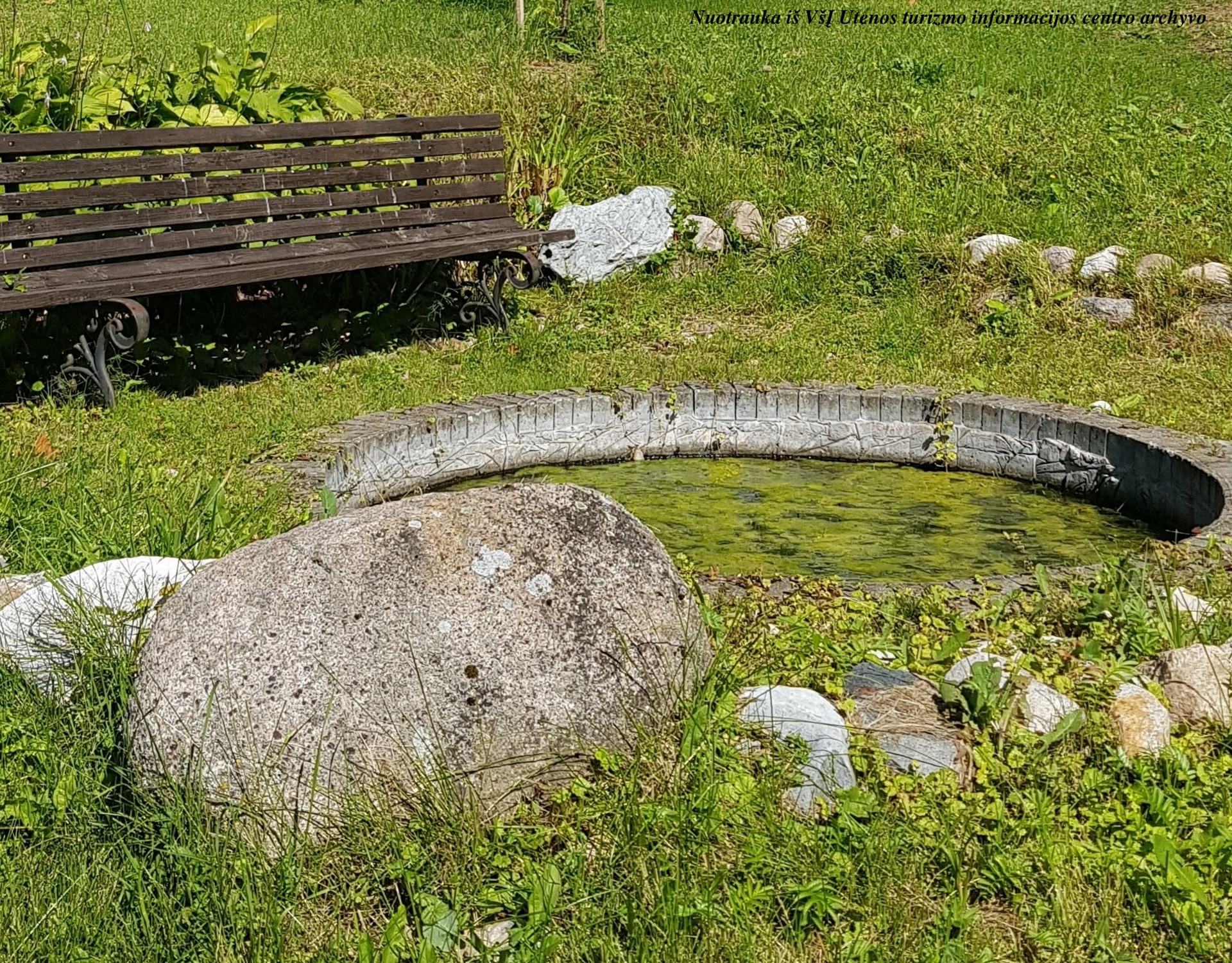In Vyžuonos, a small town, the legend of the Serpent Vyžas greets every visitor. The form of this mythical creature is immortalized in the coat of arms of Vyžuonos, and a crowned serpent is carved into a wooden post welcoming all who come to this area. From the wall of St. George’s Church in Vyžuonos rises a stone serpent, and if you wish to see the entire Serpent, make your way down the slope towards the street—there you will find a large wooden deity curled up next to a stone-lined basin. This basin is the Vyžo Spring, which has been bubbling from the slope since ancient times. Although it resembles a round pool, the stream is not visible, as water only bubbles up from the bottom.
Next to the Vyžo den stands a bench for those who wish to rest and converse with the serpent. In spring, the area resonates with birdsong, while in autumn, the rustling of leaves fills the air. From the bench, you can
enjoy a view of the rooftops of Vyžuonos and the road that stretches along the foot of the hill.
In ancient times, this area was inhabited by pagans who worshipped oaks, the sun, serpents, and thunder, praying at the springs. One day, an old priest set out for prayer with his family, but his little grandson lagged behind. Shouting "Vyža! Vyža!", he spotted a small serpent, which he decided to raise. This serpent, named Vyža, became the priest's companion in prayers at the ancient oaks and springs.
The little serpent grew and was cared for by the grandson, and their shared prayers by the oak and sacrifices on the stone created the legend of Vyža. Later, a stone serpent's head was made, to which people prayed, believing in its miraculous power, and the spring was thought to possess special qualities. It is said that washing one's hands in the Vyžo Spring can bring happiness for the entire year.




 Entertainment
Entertainment
 Sightseeing
Sightseeing
 Food establishments
Food establishments





























 55.585297, 25.495431
55.585297, 25.495431
 Get directions
Get directions









